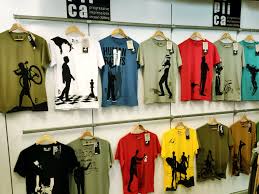Designer replicas can be legal or illegal depending on the laws of a specific jurisdiction, and how strict such particular field is enforces those laws. In most cases of the United States, Copying logo, design and brand elements of popular brands by a designer or artist in its created product amount to trademark infringement. The Lanham Act, a federal law that controls trademarks in the US, outlaws using false marks and those who break this provision may face maximum $2 million fines penalty and 10 years imprisonment for subsequent offenders. Designer replicas account for an increasing level of trade in goods, as evidenced by the US Customs and Border Protection (CBP) photograph: MORE THAN $1.
European nations share stated assumptions on the topic of replicants as well. In the case of counterfeit goods, criminal sanctions entail that sellers may be punished with fines greater than €100 000 and imprisonment under EU Law through the Intellectual Property Rights Enforcement Directive. In one case in 2021, Italian law enforcement authorities clamped down on counterfeit goods by seizing more than €150 million-worth fake luxury items. The majority of luxury brands (e.g., Louis Vuitton and Gucci) also have a policy for taking legal actions against cheaper replications, where the intention is to portray brand practices and intellectual property.
Some regions allow replicas to be bought and owned for private use, but marking or selling them as originals is against the law. In one of the world's biggest centers for designer knock-offs, China -- where it is illegal to sell fake products domestically. But enforcement still varies. According to a 2020 report by the International Trademark Association, roughly 85% of all counterfeit products confiscated worldwide were traced back to Chinese and Hong Kong sources. Even with local regulations aimed to steer clear of production, the country's extensive manufacturing means that it is a long way from eradicating the fake market — even here.

This adds another layer of complication to online channels. Replicas often arrive to echo out of websites like DHgate or Taobao but sellers would code the listings so they won't be detected. Enforcement and monitoring are becoming increasingly difficult for authorities; A 2023 University of Oxford study found that almost a wealth two-thirds of replica transactions now take place online. Despite stronger measures taken by some e-commerce giants, the Profusa listings are common and they can be hard to block entirely simply because of their number.
However, those that buy clothing designer replicas are playing a part in the ethical question as well. Brands put a lot of time and effort into designing things, so when replicas are bought instead it undercuts all that work. A 2022 Journal of Business Ethics study reported that 63% believed the notion was ethically incorrect, yet almost half said they bought replicas because real versions were out-of-reach to their wallets and convenience.
To sum it up, designer fakes hover in a legal grey zone where the production and sale of them are serious regulations for violation in many regions yet solely owning replicas is not punishable as strictly. These gaps in local enforcement, combined with consumer demand and the advent of online sales platforms have allowed for the replica market to continue its operations despite various national efforts by governments as well luxury brands.
